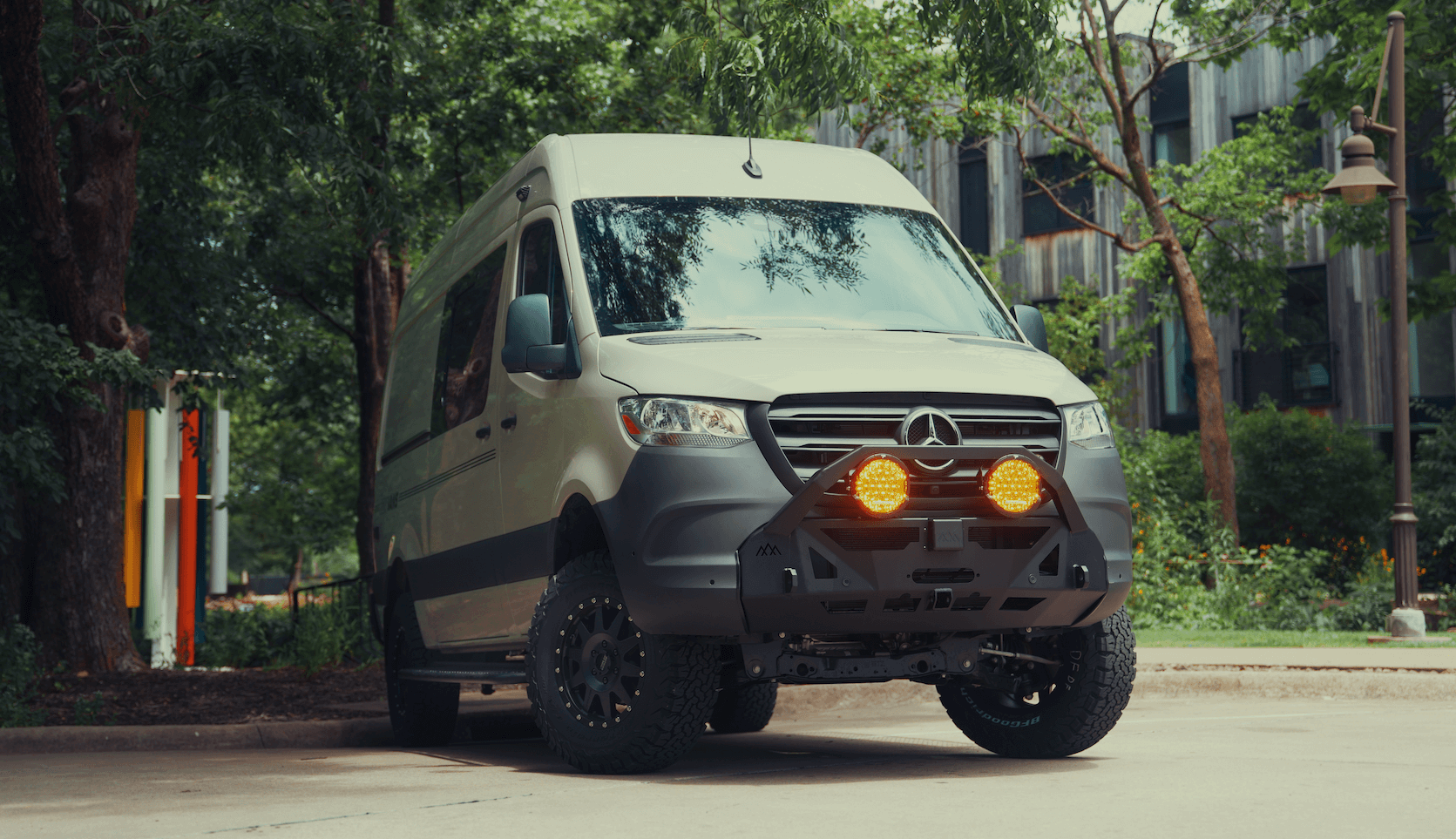Recreational Vans

Payload is the weight your van can carry on top of its own curb weight. It includes passengers, dogs, bikes, water, food, tools, and every nut and bolt added during an upfit. The door jamb sticker lists two important items: gross vehicle weight rating and tire pressure guidance. The payload number on that sticker assumes the van is bone stock.
Once you convert a cargo van into a rolling cabin, you turn payload into permanent weight. Insulation, cabinets, a bed platform, electrical gear, and water systems all count. Roof racks, awnings, windows, bumpers, and carriers add more. Every pound used for the build is a pound you do not have available for people and gear later.
Think of payload like a checking account. GVWR sets the account limit. Curb weight is the opening balance already reserved by the vehicle. Upfit parts are automatic withdrawals. Passengers and cargo are your daily spending. If you go over the limit, handling, braking, and component lifespan suffer.
To find remaining payload, start with the sticker payload or compute GVWR minus curb weight. Subtract the mass of upfit components, then subtract passengers, fuel beyond base assumptions, water, gear, and if towing, tongue weight. Confirm with an actual scale, and also compare front and rear axle loads to their GAWR limits.
A typical complete conversion adds 800 to 1500 pounds. Builds with large lithium banks, steel roof racks, rear carriers, and big water tanks can add 1800 or more. Lighter builds that prioritize aluminum, composite panels, and minimal systems can stay closer to 700 to 900 pounds.
Common component weight ranges to consider:
Passengers matter. Two adults can add 300 to 400 pounds. Add a child seat, dog, helmets, climbing rack, or camera kits and you might tack on another 150 to 300 pounds. Bikes often average 25 to 35 pounds each before racks. A moto carrier or e-bike setup can quickly consume 100 to 300 pounds.
A quick math example for a high roof cargo van with a door sticker payload of 3800 pounds:
Remaining payload estimate: 3800 minus 1200 minus 380 minus 167 minus 120 minus 100 minus 120 equals 1713 pounds. That looks comfortable, but the rear axle might be closer to its limit if most of that load sits behind the midpoint. Always check axle splits.
More than the total number matters. Weight distribution shapes how your van drives and stops. Keep dense items low and near the center. Batteries beneath benches, water tanks close to the axle line, and spares mounted with structure in mind help your van feel planted. Roof weight affects body roll and crosswind stability, so keep the roof as light as you can.
Weigh your van in travel trim. Use a multi platform scale to capture front axle and rear axle separately. Do a second pass with just the front wheels on the platform, then a third with just the rear. Compare each reading to GAWR. If you tow, load the trailer and measure again. Tongue weight counts against rear axle capacity and total payload.
Tires must match the mission. Check load indexes and pressure for the actual scale weight, not an estimate. Suspension upgrades can improve ride quality and control, but they do not change GVWR or GAWR. The legal limits remain the same. Aim for a 10 to 15 percent buffer beneath GVWR and beneath each axle rating to give yourself margin for seasonal changes in gear.
When numbers get tight, consider where to save. Swapping plywood for composite honeycomb panels can shave dozens of pounds. Using aluminum extrusions for cabinet frames instead of solid hardwoods often removes triple digit weight. Slimline roof racks and fabric awnings weigh less than heavy steel options. Right sizing the battery bank and water tank to your true usage avoids carrying dead weight.
Now, how does this translate to a real build handoff and ownership experience
At OZK Customs, payload is a decision driver from day one. We model your expected passenger count, roof gear, bikes or moto, battery bank, and water capacity before we sketch the layout. That plan lets us choose materials and components that keep you safely inside GVWR while preserving road manners.
Our team builds complete custom vans and partial upfits with a watchful eye on axle balance. We design storage to push dense items forward, route wiring with minimal duplication, and specify lightweight panel systems that stay quiet on rough roads. Before delivery, we scale the vehicle and walk you through loading patterns to keep the numbers in the green.
If you want a capable travel rig without the guesswork, start by browsing our van category and see what fits your trips. When you are ready to talk through a payload optimized layout, book a consult and we will turn your wish list into a precise plan.
Tell us how you travel, who rides with you, and what you carry. We will design a van that respects payload, balances the axles, and keeps you confident in the mountains and the city. Submit the form to start your OZK plan today.
Ready to protect your payload and performance? Tell us how you travel and we will design a custom van that stays inside GVWR, balances axle loads, and drives as good as it looks. Submit the form to start your OZK build plan and get a precise payload forecast before we turn a single screw.
ADDRESS:
6159 E Huntsville Rd, Fayetteville, AR 72701
PHONE:
(479) 326-9200
EMAIL:
info@ozkvans.com